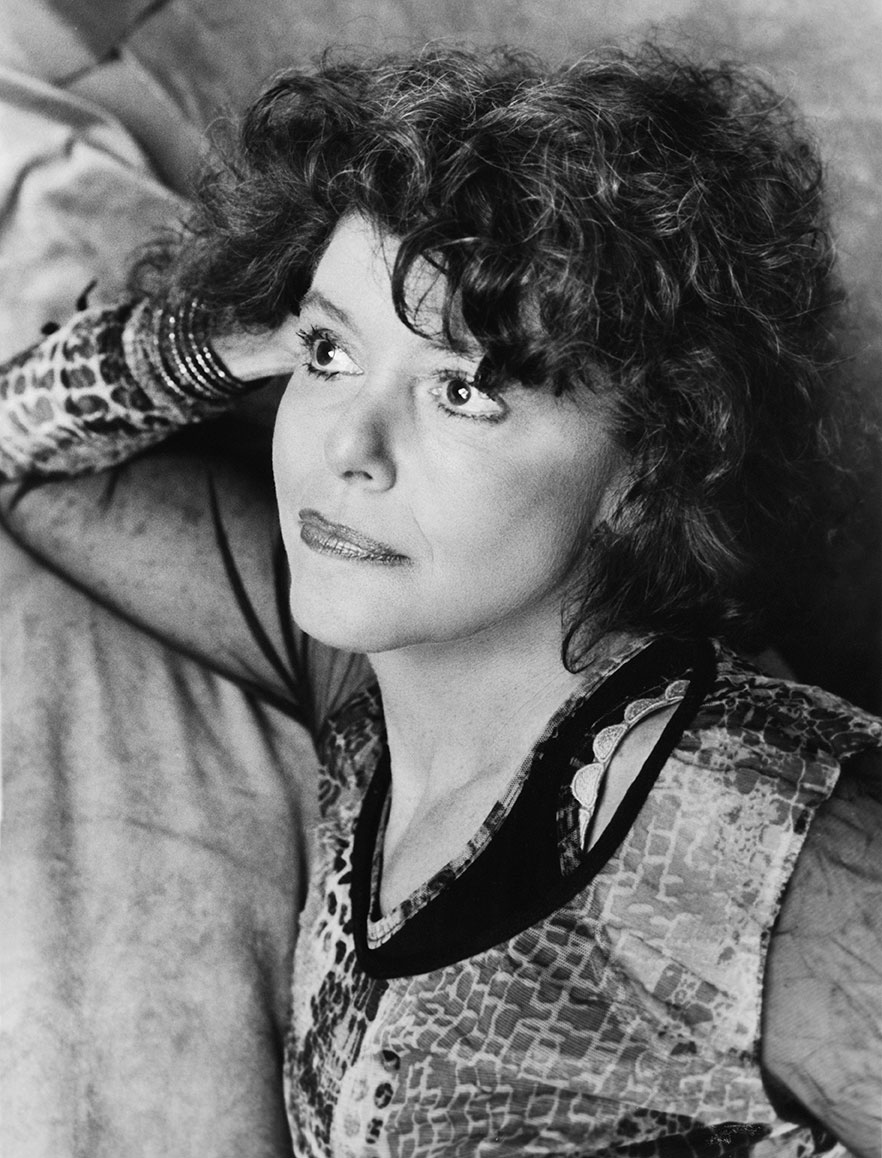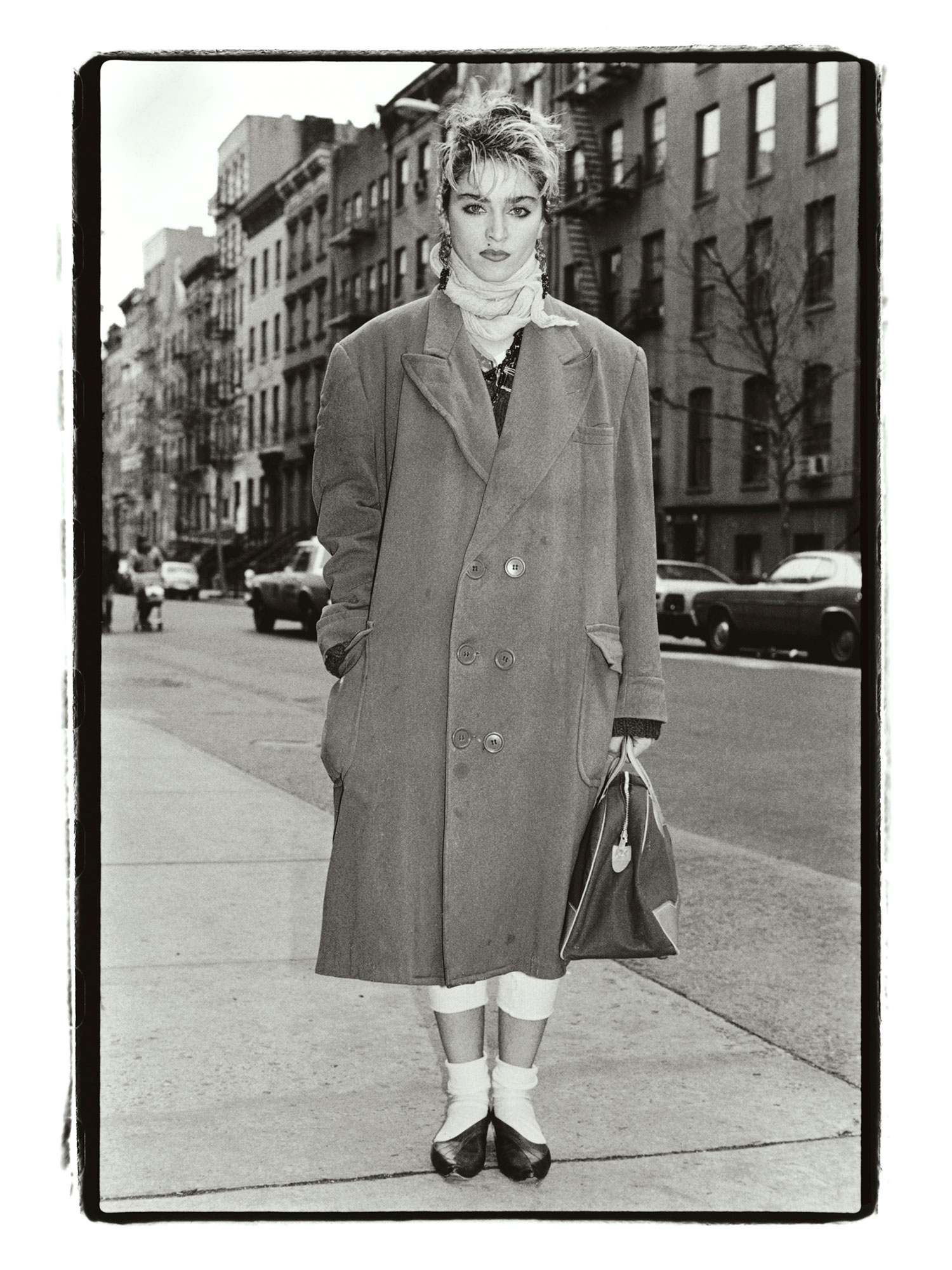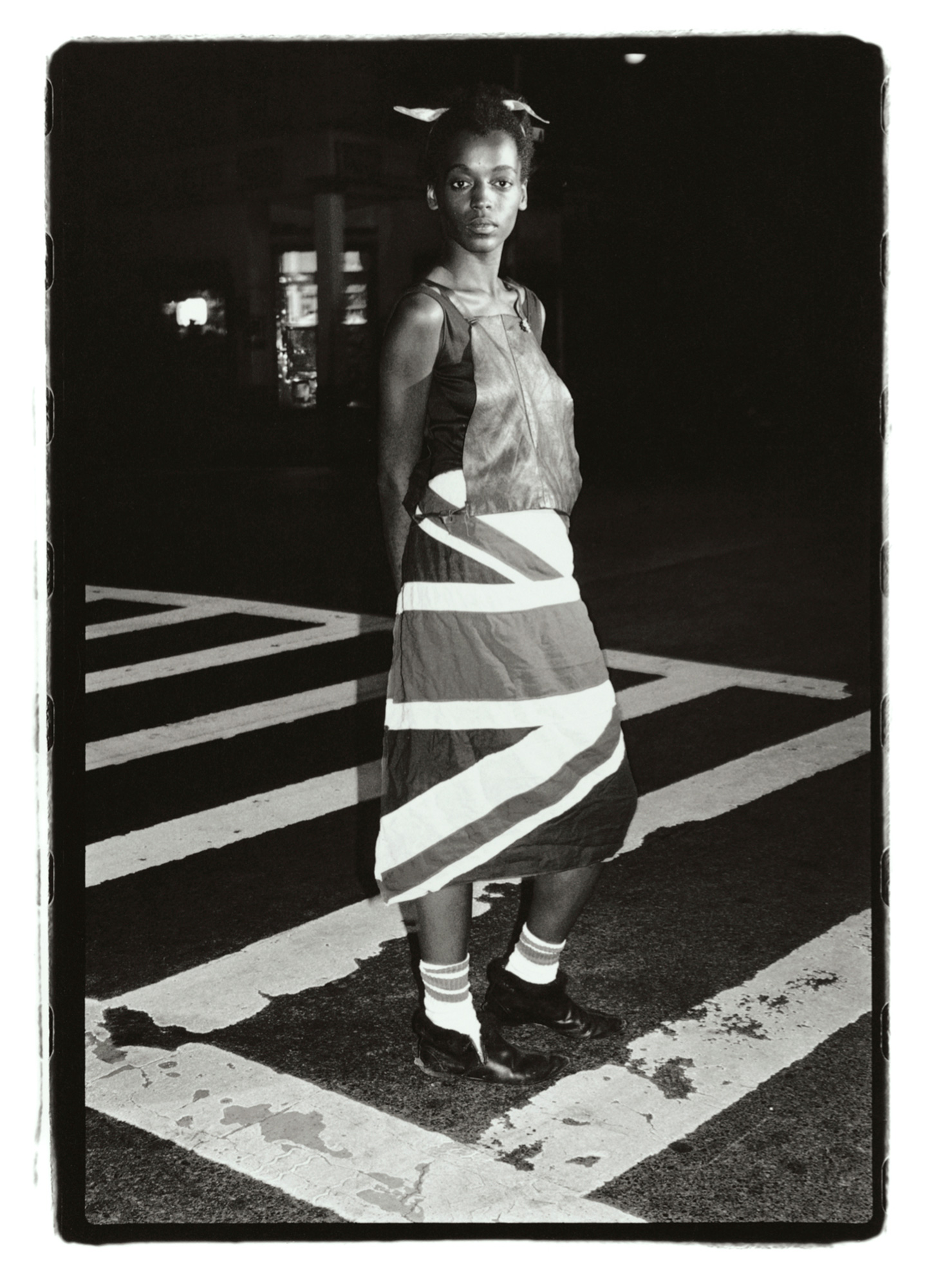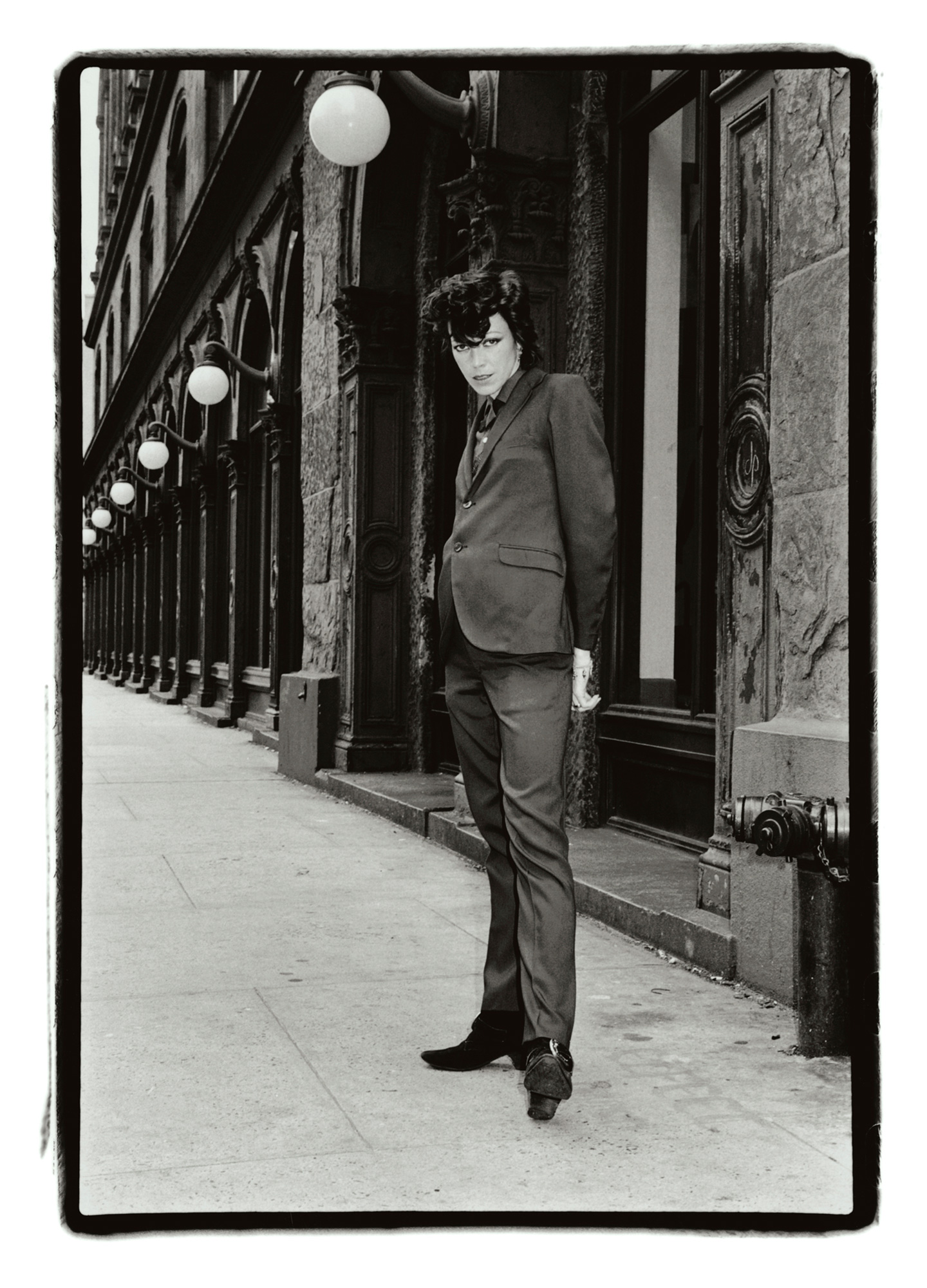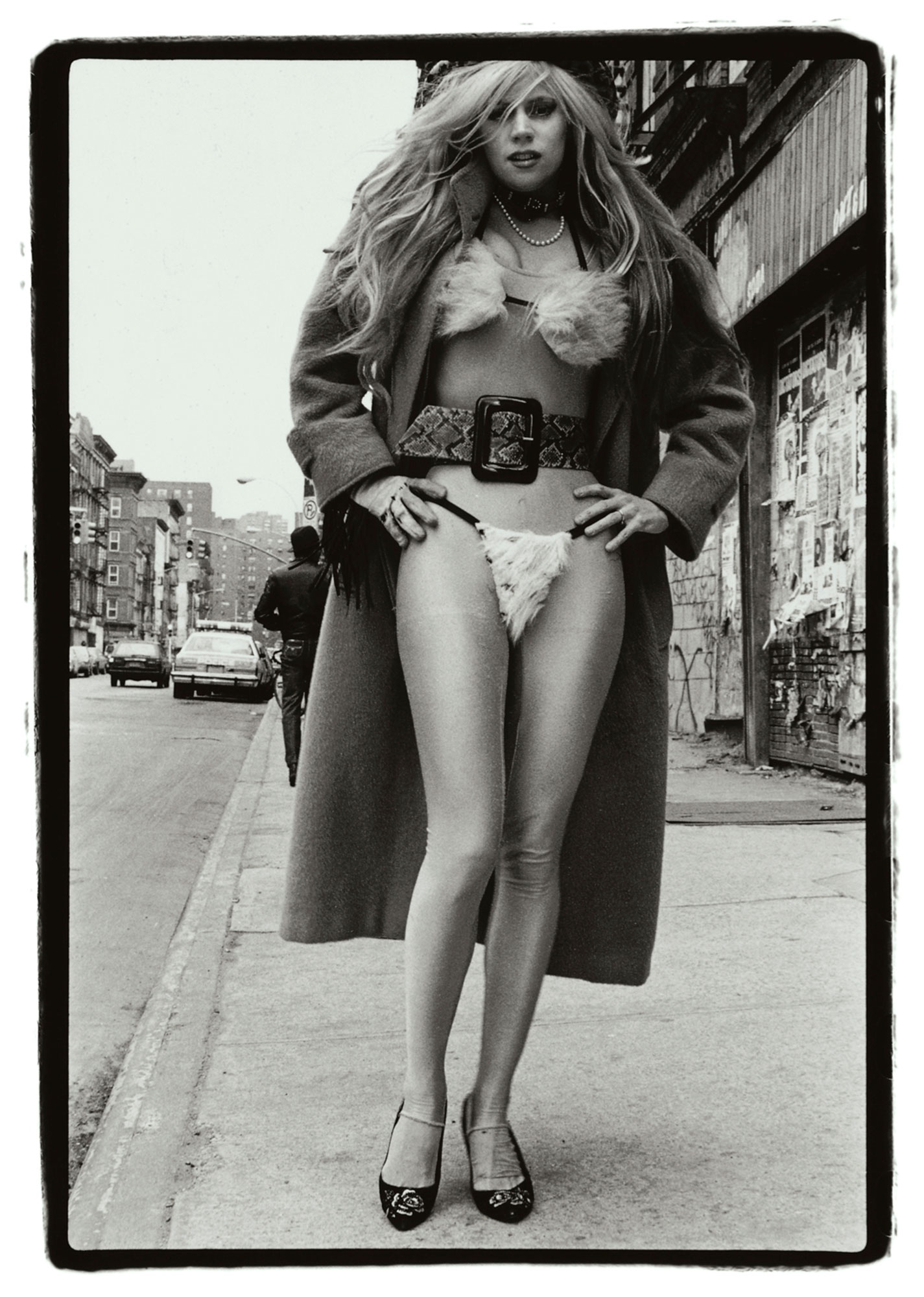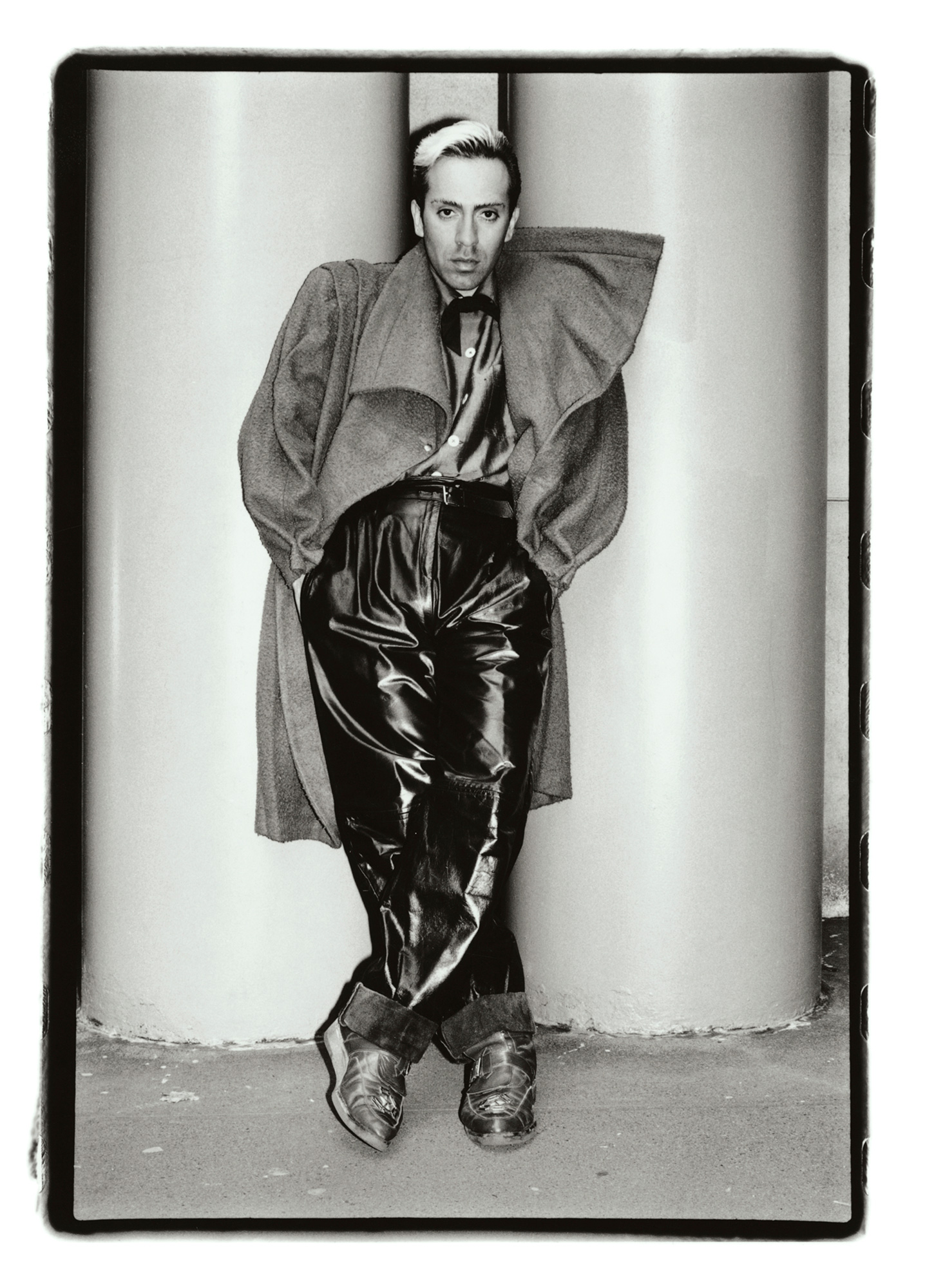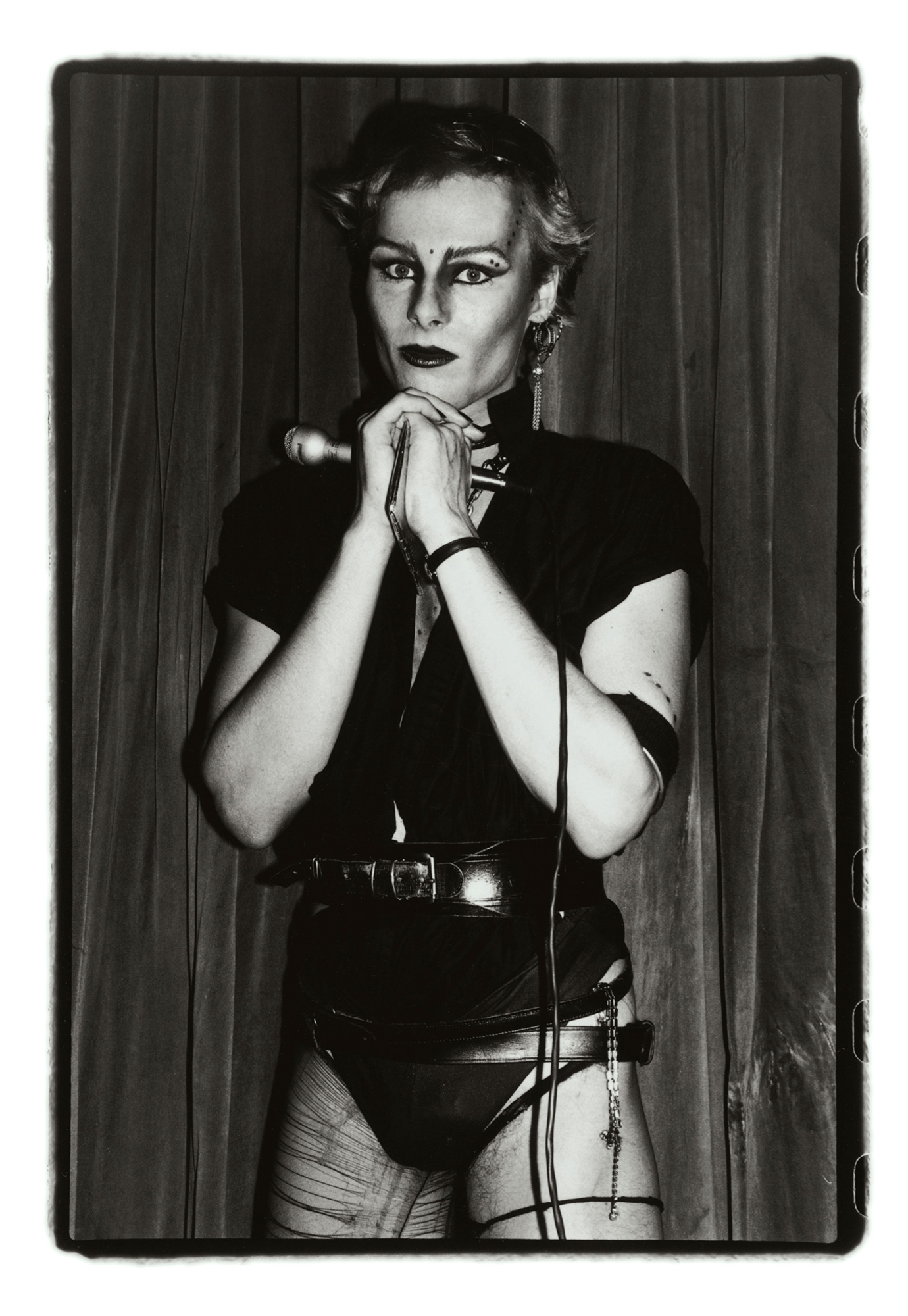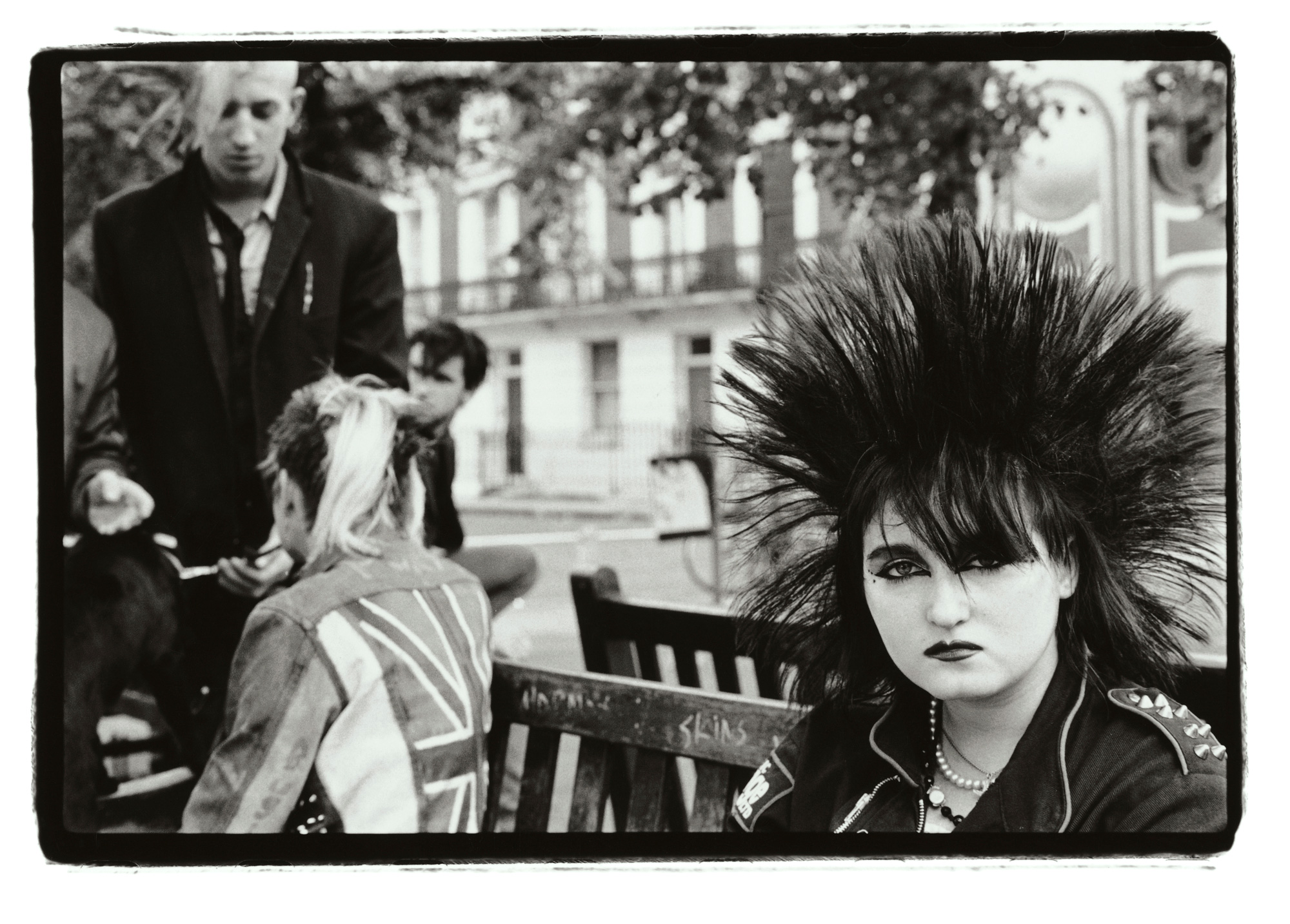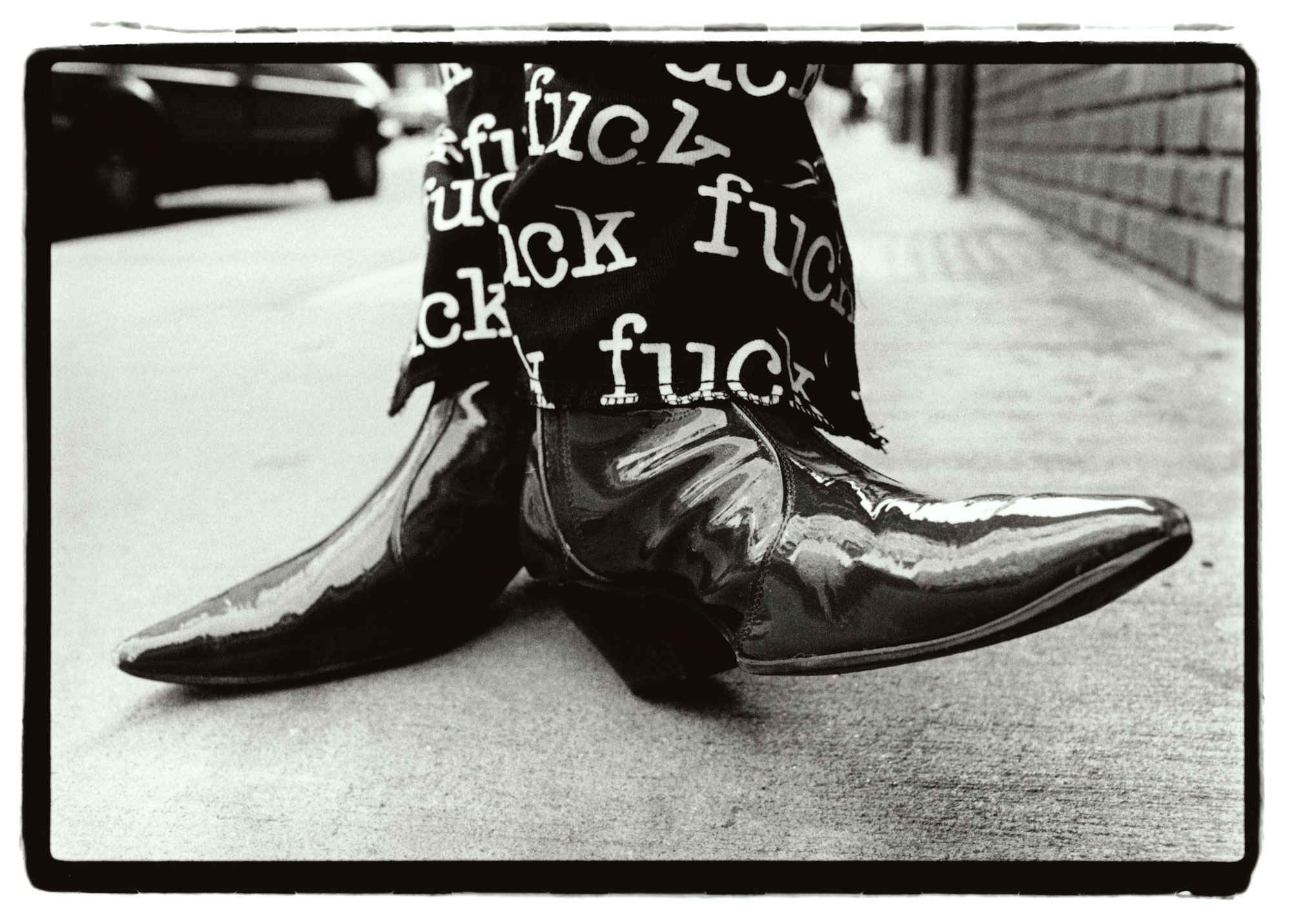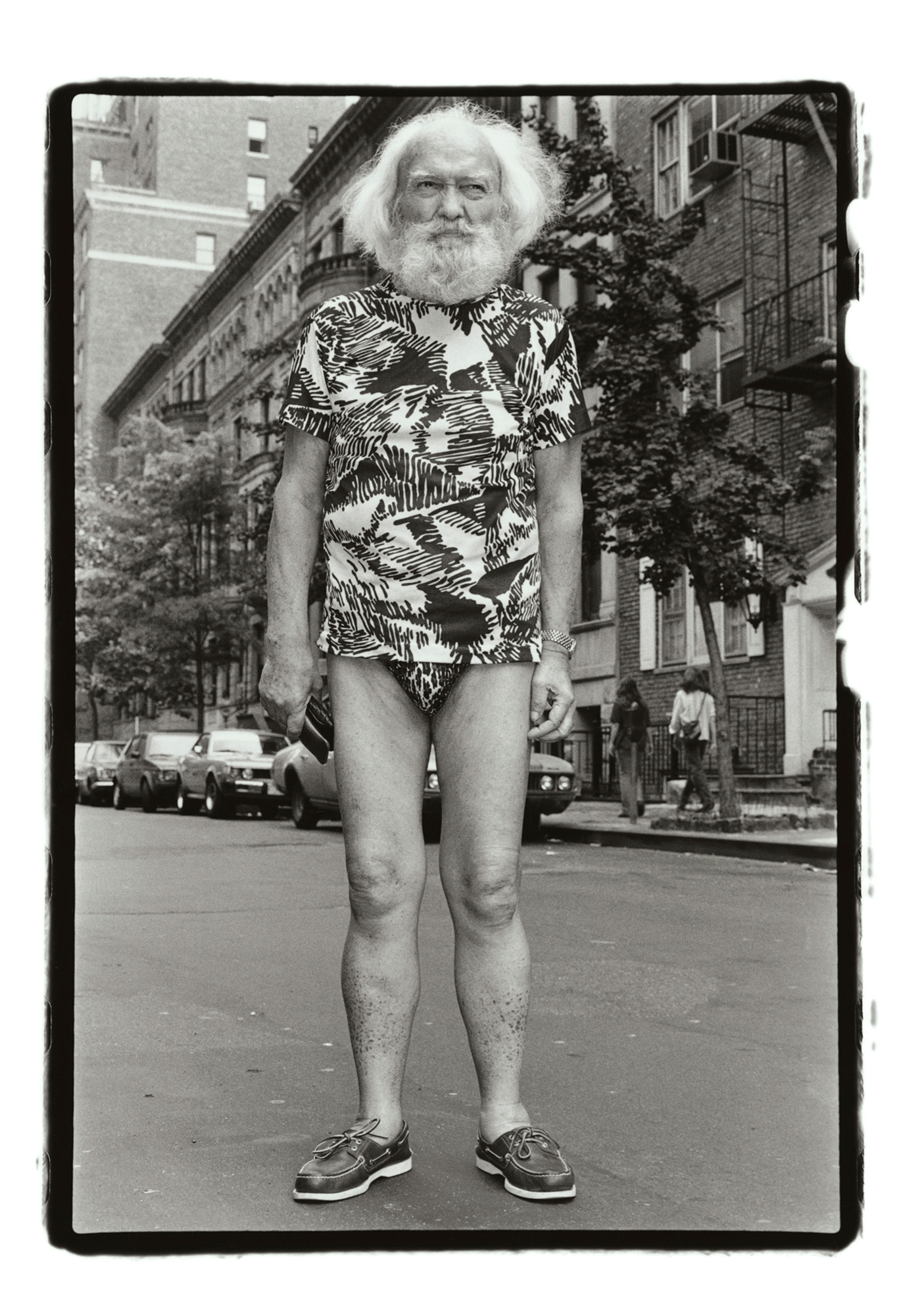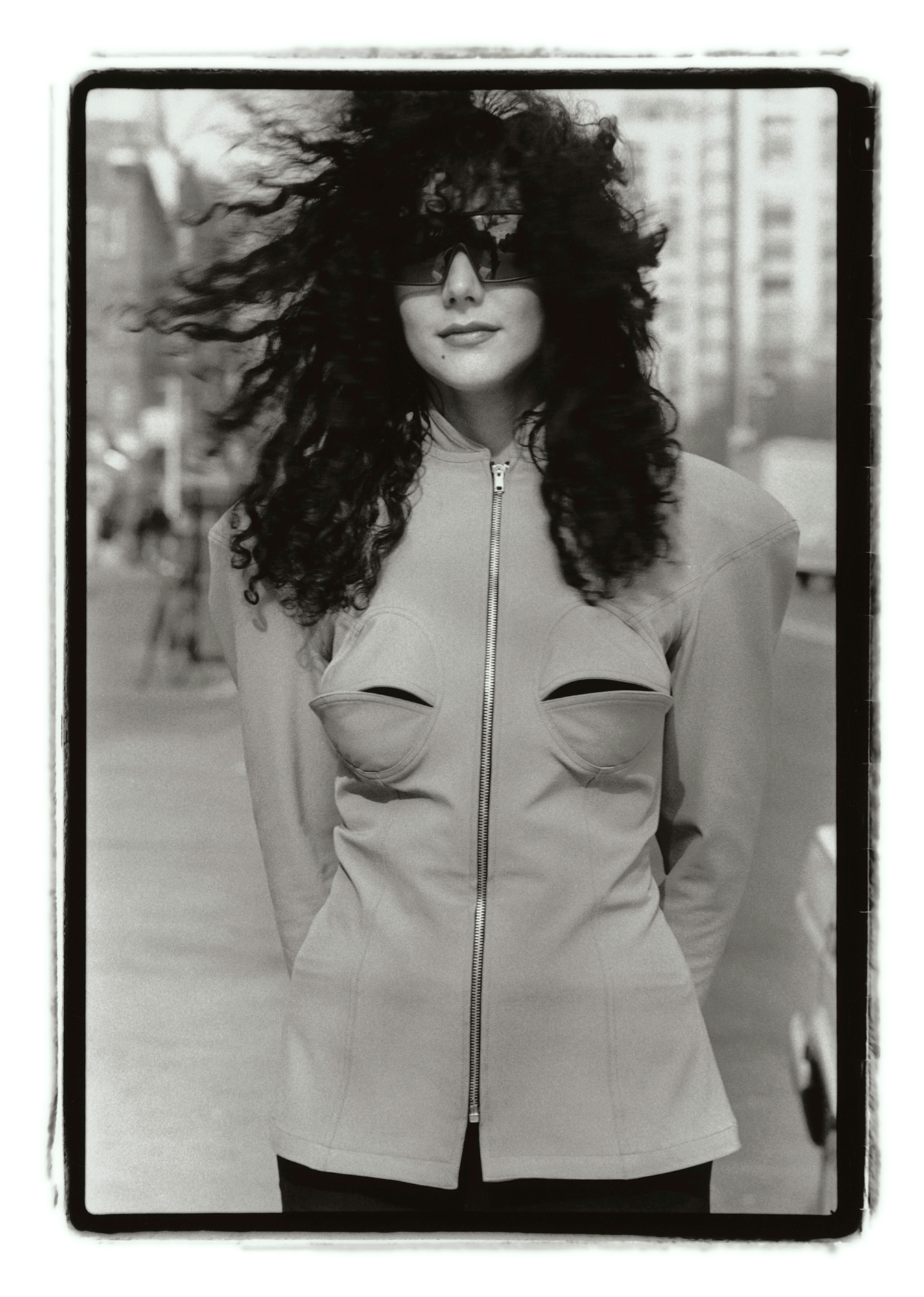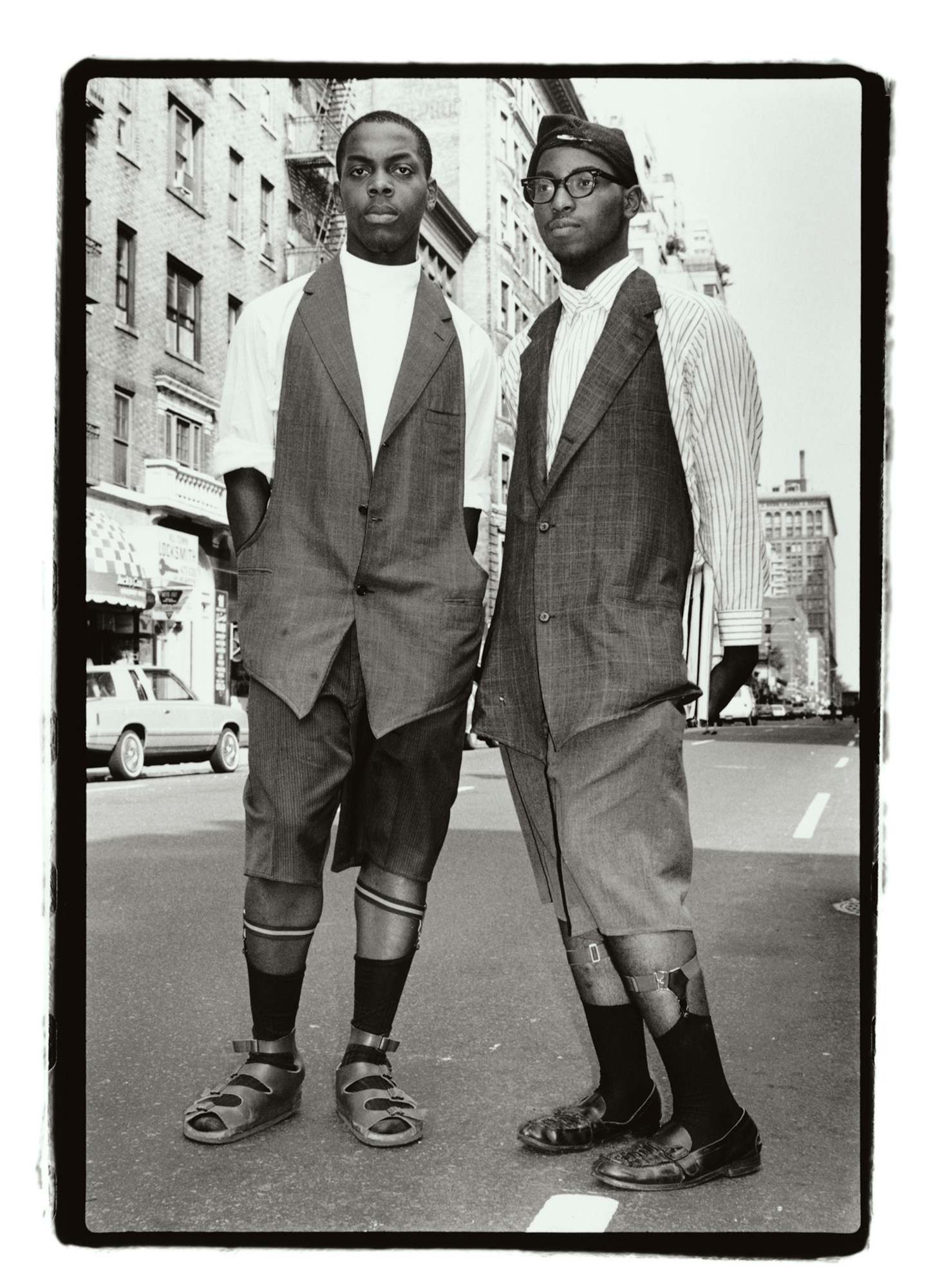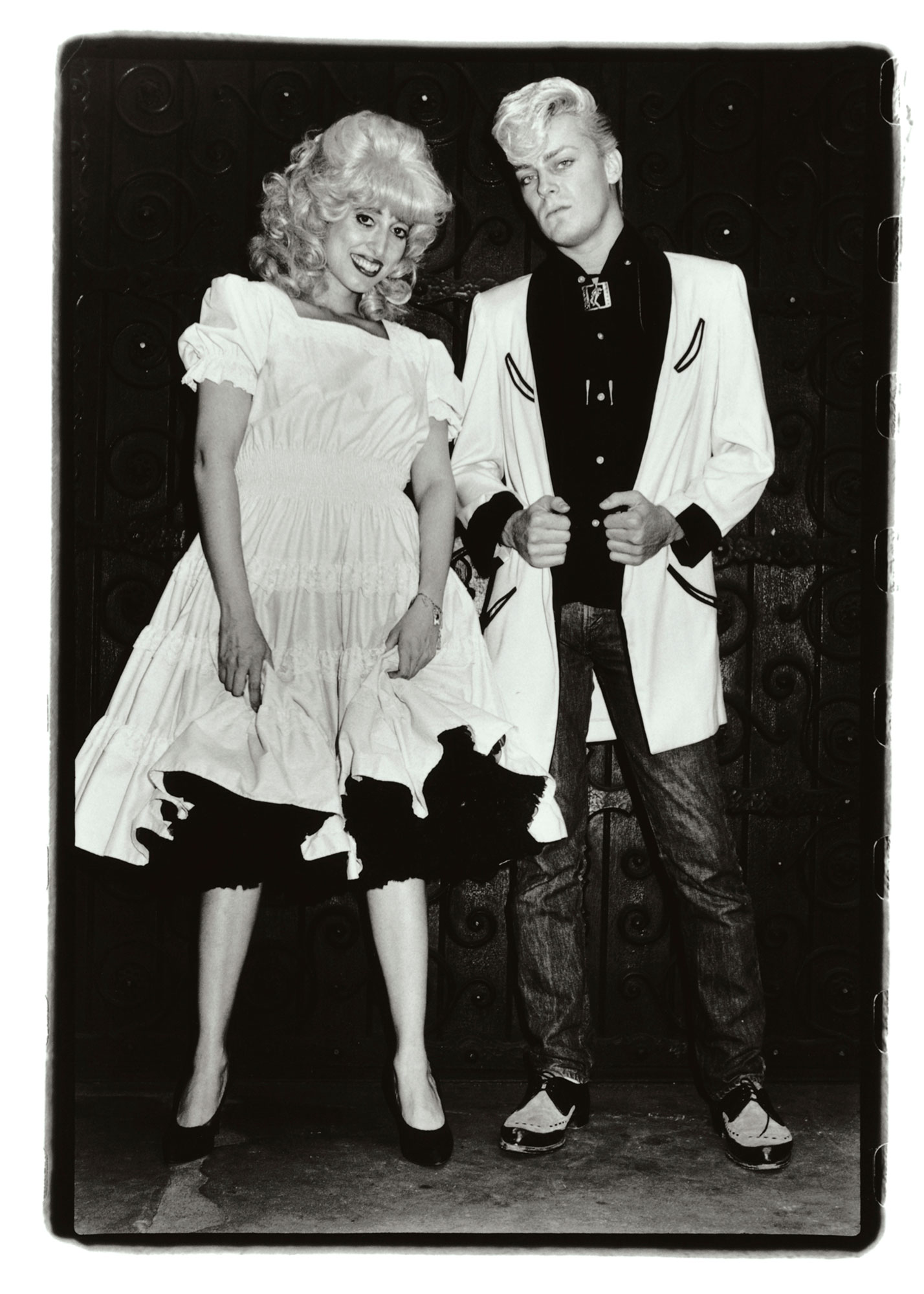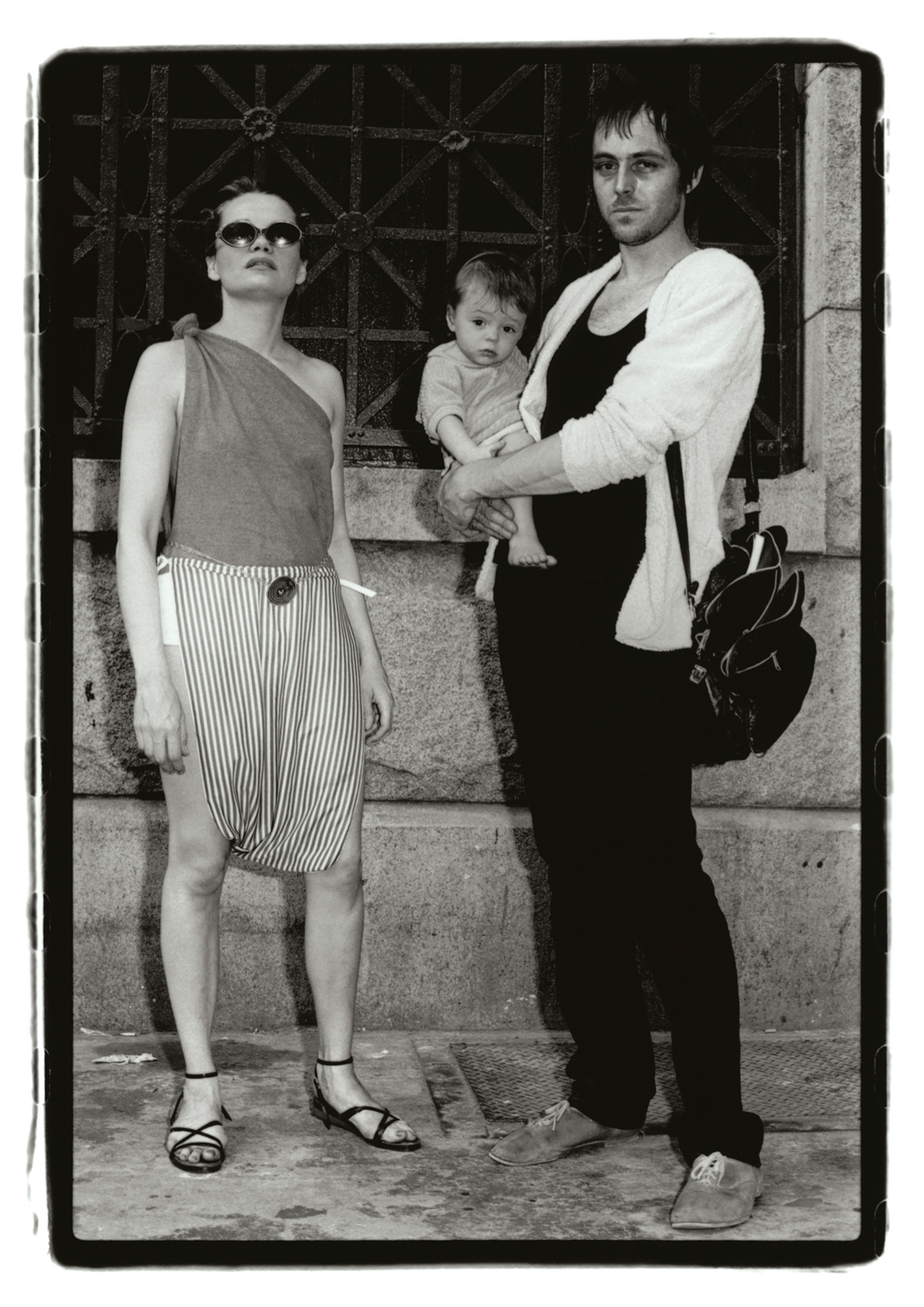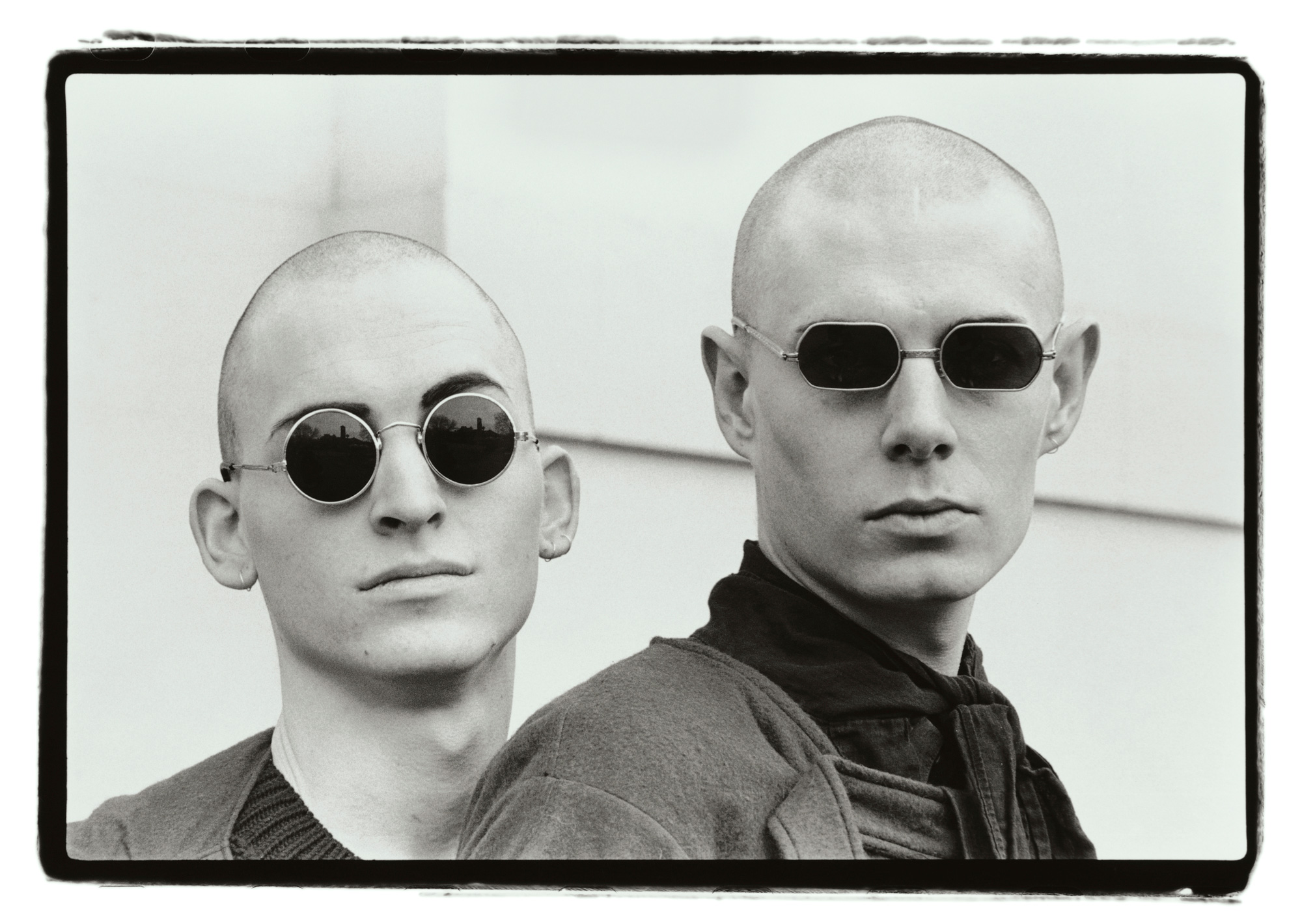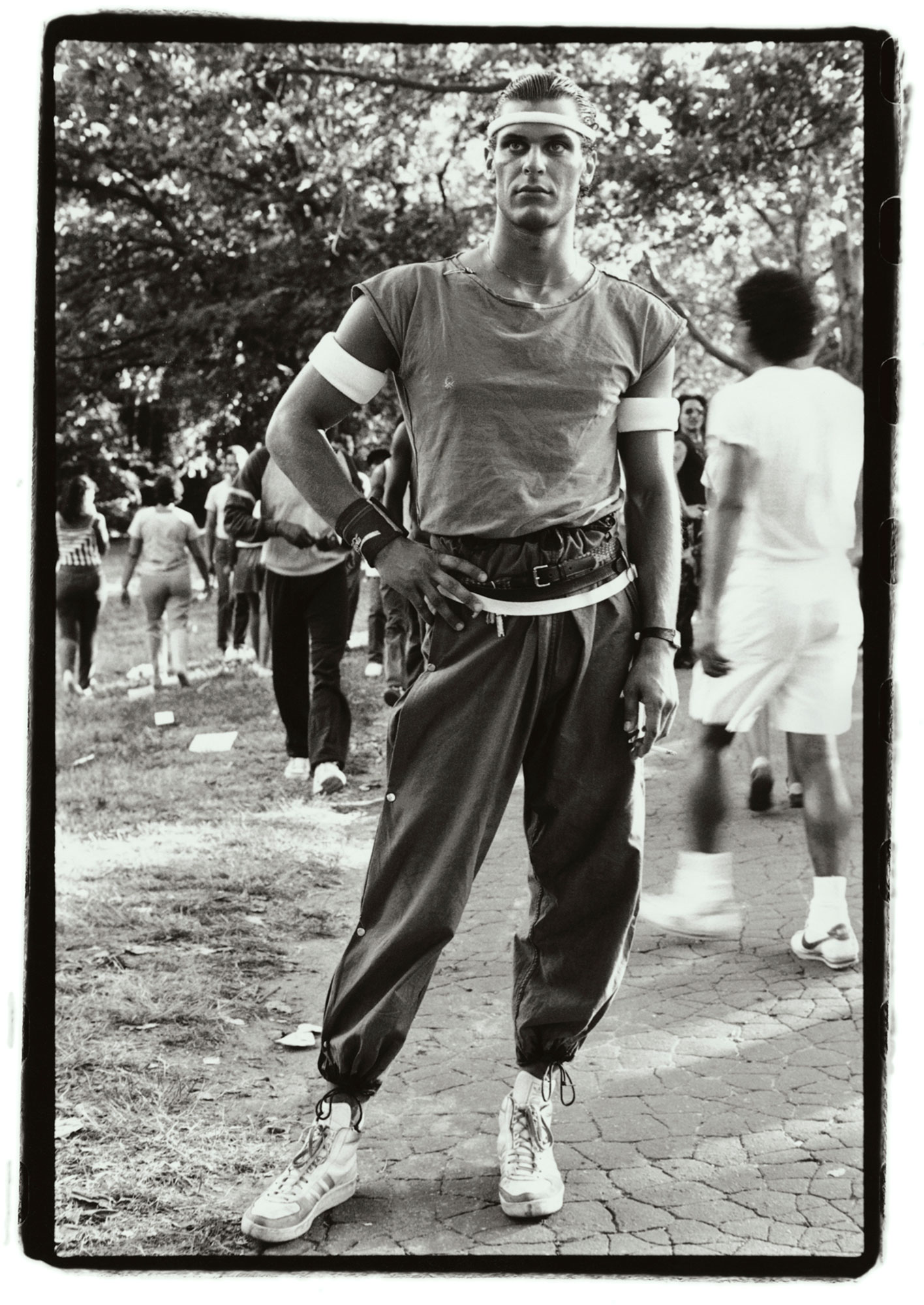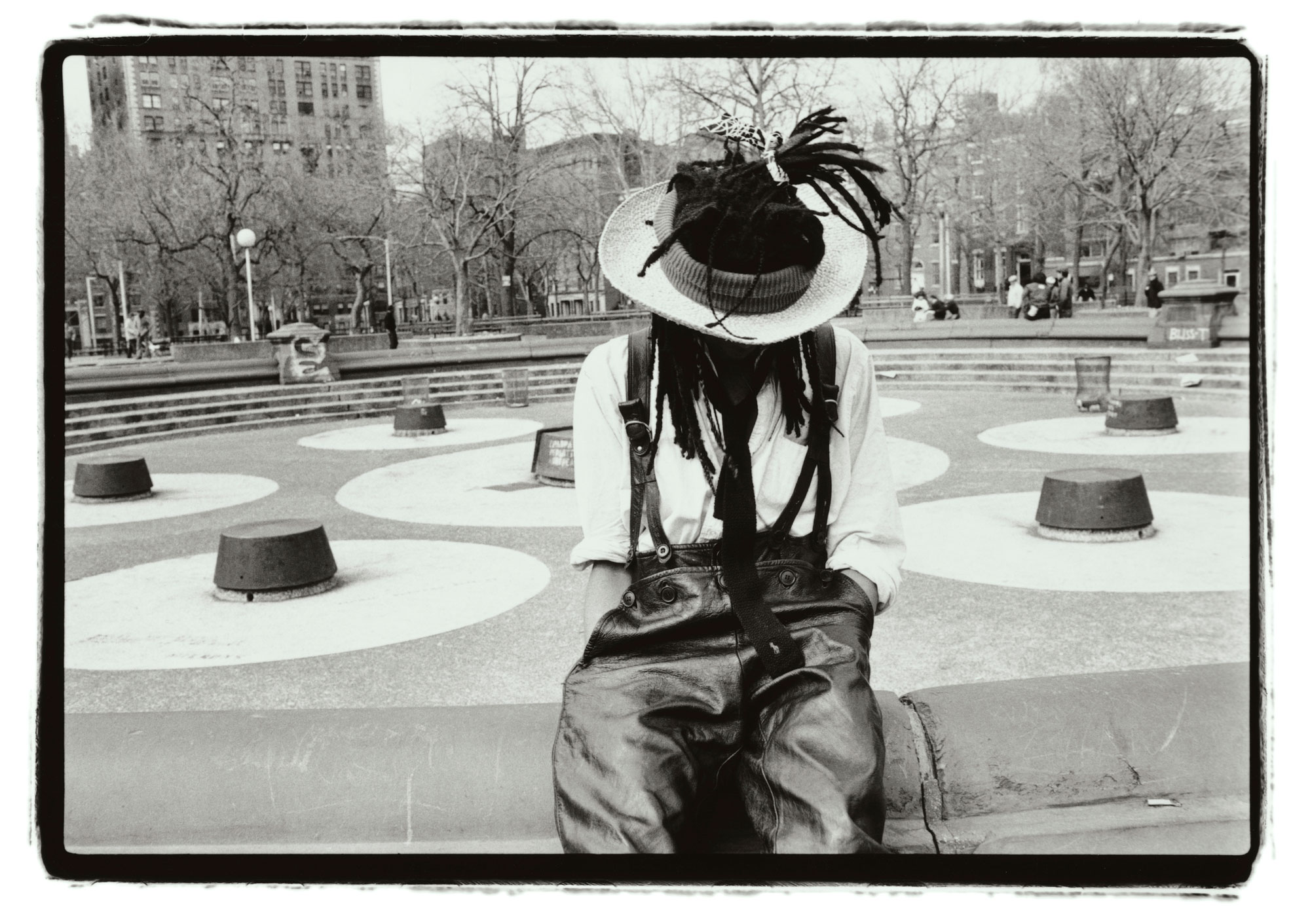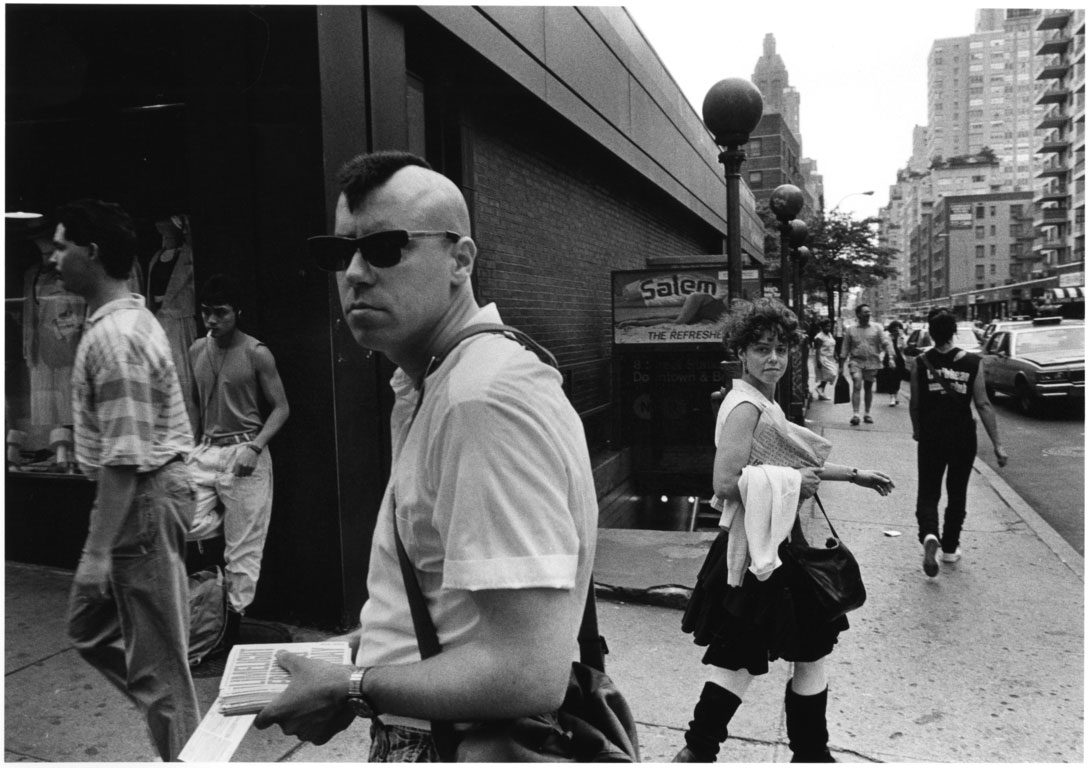
Everybody has a life. Everybody has a sensibility. Everybody has yearnings. Everybody has a cause to plead. And everybody has a camera. It takes an intelligence as bold as Amy Arbus to turn these universal commonplaces not just into works of art, but works of insight. ~Richard Avedon
Between 1980 and 1990, over 500 of photographer Amy Arbus’s impromptu and edgy portraits of New Yorkers appeared in the Village Voice’s monthly fashion feature, ‘On the Street.’ The column’s missive was to document the city’s most adventurous trendsetters as they went about their lives… She combed the streets looking for those who were dressed for success and poised for fame. By focusing on the fearlessly non-conformist, her photographs offer a startling and seamless blend of fashion, portraiture, and street theater. ~A.M. Holmes
Amy Arbus
Allah Brothers, 1983
silver gelatin print, ed. #1/25
8 x 5.5 on 11 x 7 inches
$2500
When I ask to photograph someone, it is because I love how they look and I think I make that clear. I’m paying them a tremendous compliment. What I’m saying is I want to take you home with me and look at you for the rest of my life.
I was walking down Broadway and there was the band, The Clash, hanging out with their girlfriends. They were waiting to be extras in Martin Scorsese’s film, The King of Comedy. It was one of the few photos I took at the time in which I did not interact with my subjects. They were perfectly staged and I did not want to interrupt.
In 1980 when I started working for The Village Voice I didn’t think of myself as an artist, in part, because I was working for a newspaper. I also didn’t consider myself a journalist because I wasn’t covering the news. I was making photographic portraits for a style page called, “On the Street.” My page ran every six weeks with the tagline, “There are eight million fashions in the Naked City and Amy Arbus is going to photograph all of them… a few at a time.” It felt like a tremendous undertaking. After making these images for ten years, I realized that what I had created was a chronicle of a seminal time in New York City’s history.
The young people in downtown Manhattan in the 1980s didn’t have much money but they were tremendously creative and determined to succeed as artists. Among my subjects were musicians, clothing designers, performance artists, writers, and painters. They dressed to be noticed, as if it were their calling card. There was a palpable sense of romance about life and all it had to offer, an innocence the likes of which we have not seen since.
This series taught me how to resolve technical challenges. The prints, when reproduced in the newspaper, appeared dark with increased contrast. My subjects often wore black, had various skin tones and the tall buildings of the city created top lighting. To solve these issues I used a flash-fill technique. I measured the light on the background with the light meter in my Nikon FM 2 camera and set my on-camera flash to mimic the exposure. This illuminated my subjects with a hard, flat light and opened up the shadows. It made people look like they were popping out of the background.
Although I was raised in Greenwich Village, I felt like I was on the outside of the “scene” I was documenting. Everyone else seemed to know each other, but my camera gave me access to their world. I found them endlessly intriguing as did others because “On the Street” had a big following. People watched for their friends to appear in the paper or waited to be discovered themselves. When I approached people, they were eager to be included in this chic roster of intrepid individuals. Being included was like getting an award for your creativity.
Five hundred photographs were published in “On the Street” over the course of ten years. I wasn’t surprised that many of these talented people went on to become famous. In 1983, when I photographed Madonna on St. Marks Place, it was the same week her first single was being reviewed by The Village Voice. She stood there wearing a stained coat, clogs, and carrying a bowling bag as a purse. She looked at the camera as though she could see her own future. When asked about her style, she said, “I still have my pajamas on.”
Looking back at the images from “On the Street” and I am able to acknowledge that I was, in fact, both an artist and journalist. My page captured such a vital time in the city’s culture both before and during the AIDS crisis. “On the Street” is my early work. The pictures have a snapshot aesthetic, but they are deceptively organized. Many of the pictures are posed and often the subjects are making direct eye contact with the camera. I used a low camera angle, making my subjects look like superheroes. These photographs have all the excitement and “mistakes” of a novice; but they remain my most iconic and sought after series of work.
Amy Arbus
I spent about a week photographing each month for a page of photos. I went to several neighborhoods but the East and West Villages were the most promising places to find people who had invented their own style… Over the course of ten years I made thousands of photographs for the Village Voice and roughly 500 were published.
Amy Arbus
Two Guys with Sunglasses, 1988
silver gelatin print, ed. #1/25
20 x 16 inches
$3500


